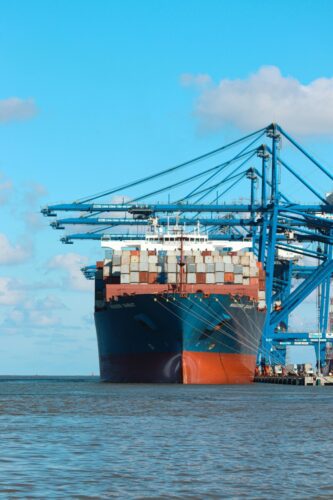In recent days, a significant port strike has disrupted operations at key shipping hubs, particularly affecting the Port of New York and New Jersey. As one of the busiest ports in the United States, any disruption here reverberates through supply chains and the broader economy. For stakeholders in the industrial property market surrounding New York City, the implications of the strike are profound and multifaceted. This article explores how the port strike will affect the industrial property market in this critical region.
 Immediate Supply Chain Disruptions
Immediate Supply Chain Disruptions
One of the most immediate effects of the port strike is the disruption of supply chains. With shipping delays and bottlenecks becoming common, businesses are facing challenges in inventory management and fulfillment. Many companies rely on just-in-time inventory systems, which are highly sensitive to disruptions. As businesses scramble to adapt, there may be an increased demand for industrial spaces that allow for bulk storage and greater inventory flexibility.
Increased Demand for Warehousing and Distribution Centers
The strike highlights the vulnerability of relying on a single transportation hub. As a result, companies may seek to mitigate future risks by expanding their logistics capabilities. This could lead to increased demand for warehousing and distribution centers near New York City, particularly those equipped to handle a broader range of goods. Properties with strategic access to major highways and alternative transportation routes will become particularly attractive.
Shift Toward Regional Supply Chains
The strike may accelerate a trend towards regionalization in supply chains. Businesses might prioritize sourcing goods from local suppliers to avoid reliance on long-haul shipments through disrupted ports. This shift could lead to an increase in demand for industrial properties in and around New York City. In the future companies may seek to establish closer ties with suppliers and customers. Local manufacturing and assembly facilities could see a resurgence, driving further interest in industrial spaces.
Rising Rental Prices
The combination of increased demand for industrial properties and limited supply could lead to rising rental prices in the area. Landlords may capitalize on the heightened demand, particularly for properties that offer strategic advantages, such as proximity to the port, major highways, and urban centers. As businesses scramble for available space to accommodate their logistics needs, rental rates may rise, impacting the l affordability of industrial space.
Long-Term Considerations
In the long term, the effects of the port strike may reshape the industrial property landscape near New York City. Businesses may prioritize investing in facilities that offer flexibility and resilience against future disruptions. This could involve retrofitting existing spaces or constructing new properties designed for efficient logistics and distribution.
Additionally, developers may begin to focus on creating multi-modal facilities that integrate various transportation methods—road, rail, and maritime—enhancing resilience and accessibility. This trend could further reshape the industrial property market, making it more robust against disruptions.
The port strike at the Port of New York and New Jersey serves as a wake-up call for businesses and investors in the industrial property market. Companies may re-evaluate their supply chain strategies and seek greater flexibility, the demand for industrial spaces is likely to increase. This shift could lead to rising rental prices and a transformation in how industrial properties are developed and utilized in the region. Stakeholders must remain vigilant and adaptable to navigate these changes in an evolving market landscape.
Other Industrial news:
https://www.globest.com/sectors/industrial/?slreturn=20241021140201


 Immediate Supply Chain Disruptions
Immediate Supply Chain Disruptions